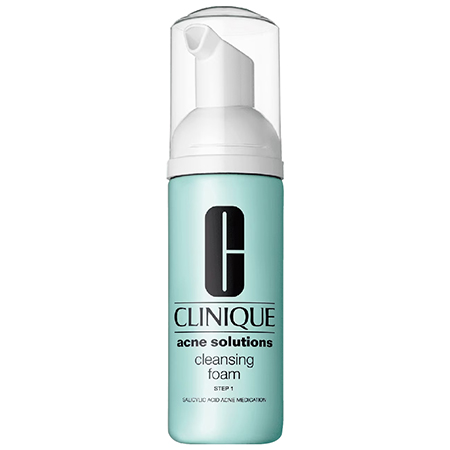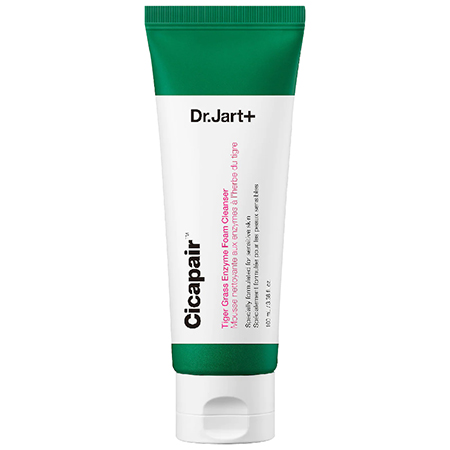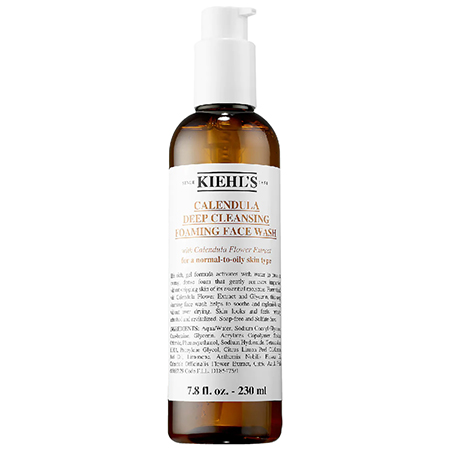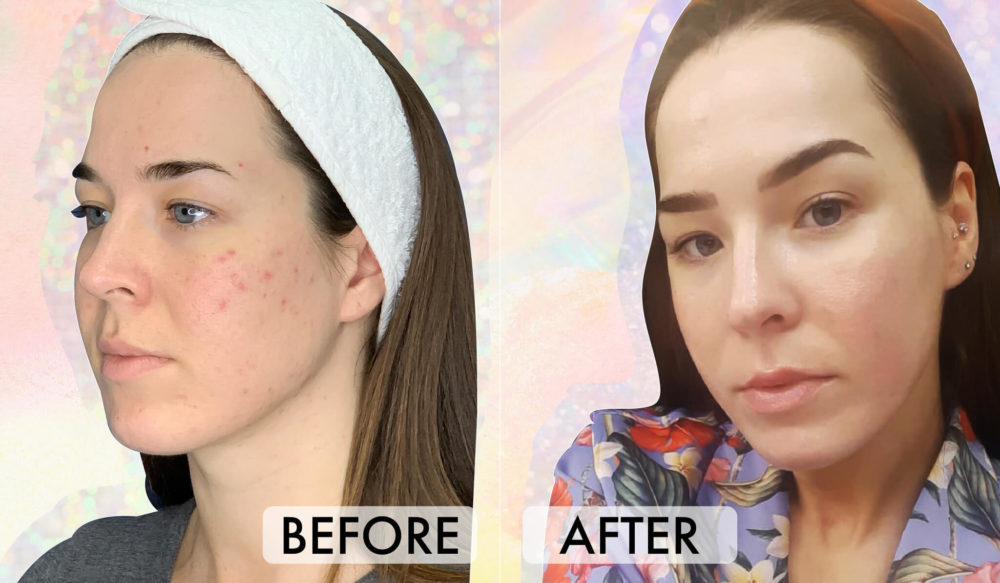Foam Cleansers Are Trending. What’s the Hype?

No skincare routine is complete without a cleanser, but trying to figure out what type of cleanser to use is tricky. There are oil-based balm cleansers that magically melt away every trace of mascara and makeup, cream cleansers that double as a moisturizer, and gel cleansers that nix excess oil.
Light and airy foam cleansers are another option, and according to recent trend reports, they’re enjoying a notable surge in popularity as we speak. In fact, foam cleansers are considered the #1 top trending product in South Korea – a place that often informs trends worldwide – with 27% growth since last year.
So what is it about these modern-day foam cleansers that’s making them so popular? And should you replace your current go-to with a foamy formulation? We’ve got answers ahead.
What Are Foam Cleansers?
As the name suggests, foam cleansers are a type of face wash that suds up into airy foam consistency. They’re made with “surfactants” – AKA compounds that emulsify oil and cling to debris so it’s all swept away from your skin.
“Foam cleansers usually transform a traditional cleanser into a frothy, bubbly, rich product,” says Dr. Jodi LoGerfo, a board-certified dermatologist with the Orentreich Medical Group in New York City. “They’re often good for oily and acne-prone skin because they can deep clean the skin removing excess oil, dirt, and grime. They can also help to evacuate pores while effectively and thoroughly cleansing the skin.”
Posts You'll Love:
Meet the New Generation of Foam Cleansers
Foam cleansers haven’t really gone anywhere since their invention, but they definitely experienced a dropoff in popularity from the ‘90s through the 2010s. There’s a pretty good reason why, too. TBH, back in the day, they were kind of harsh and not made with the best ingredients.
“Older foam cleansers woould commonly use the surfactant sodium lauryl sulfate – or SLS for short – because it produced a lot of foam,” explains Blair Hayes, a physician assistant (PA-C) and the CEO and founder of Skin by Blair Aesthetics. “The thing about SLS is that it’s a small molecule that can easily penetrate into the skin, so instead of being washed away when you rinse off your cleanser, it stays on your skin and disrupts your skin barrier, which ultimately causes skin irritation.”
At first, formulators and skincare pros thought that foam cleansers were so irritating because of how effectively they removed oil. Today, though, researchers know it was surfactant causing issues. Since this discovery, foam cleansers have gone through a formula reformation of sorts. Many are now SLS-free, and the foam is created not by the surfactant but either via gentler ingredients or a pumping mechanism that mixes the product with air.
“These foam cleansers, as opposed to cream or gel, can penetrate pores more easily, so it is able to remove more oil, sebum, and debris within the pores,” says Hayes.
Who Should Use Foam Cleansers?
Anyone can benefit from using foam cleansers, but Hayes says that it’s one of the best cleansers for people with oily or acne-prone skin types. “They’re able to remove buildup within the pores more easily than other types of cleansers,” she says. “This means less clogged pores and less breakouts.”
Dr. LoGerfo agrees, noting that foam cleansers can also help prevent excess oiliness and shine throughout the day. She adds that people with dry or sensitive skin types can also benefit from using foam cleansers, particularly if they’re formulated with moisturizing ingredients.
5 Expert-Recommended Foam Cleansers
Curious about which foam cleansers to try? These expert-recommended options are a sure bet.
1. Innisfree Hydrating Cleansing Foam with Green Tea $10
 Source: innisfree
Source: innisfree
Jeju green tea is the hero in this creamy cleansing foam from K-Beauty brand Innisfree. The sulfate-free formula features microbubbles that gently and deeply cleanse skin for a refreshed look and feel.
2. Clinique Acne Solutions Cleansing Foam, $23
 Source: Clinique
Source: Clinique
If you’re battling breakouts, this sulfate-free foaming cleanser is for you. “It’s incredibly efficient and effective at cleaning acne-prone skin,” says Dr. LoGerfo. “Even if the acne is inflamed, this cleanser is appropriate because it is extremely gentle. The bonus is that it contains 2% salicylic acid, which helps unclog pores.”
3. Dr. Jart+ Cicapair Tiger Grass Enzyme Foam Cleanser, $26
 Dr.-Jart+Cicapair-Tiger-Grass-Enzyme-Foam-Cleanserir
Dr.-Jart+Cicapair-Tiger-Grass-Enzyme-Foam-Cleanserir
Board-certified dermatologist Dr. Audrey Kunin says Cerave’s Foaming Facial Cleanser is one of her top picks. This creamy and hydrating foaming cleanser uses glycerin to hydrate the skin along with enzymes to improve dullness and discoloration.
4. Revision Gentle Foaming Cleanser, $44
 Source: Revision Skincare
Source: Revision Skincare
Hayes says this is her absolute favorite foam cleanser. “It uses a pump that causes the product to foam instead of an actual foaming agent, which is especially great for those with sensitive skin,” she says. “It also contains chamomile, aloe vera, and allantoin, which moisturize and calm the skin.”
5. Kiehl’s Calendula Deep Cleansing Foaming Face Wash, $36
 Source: Kiehl’s
Source: Kiehl’s
Free of sulfates SLS and SLES, this clean formula is a hero for anyone with oily, combination, or normal skin types. Dr. LoGerfo says, “It is extremely gentle and soothing while effectively cleansing the skin.”
If you prefer oil-based cleansers, check out these 10 oil-based cleansers that’ll wipe away every last trace of makeup.























Leave a comment